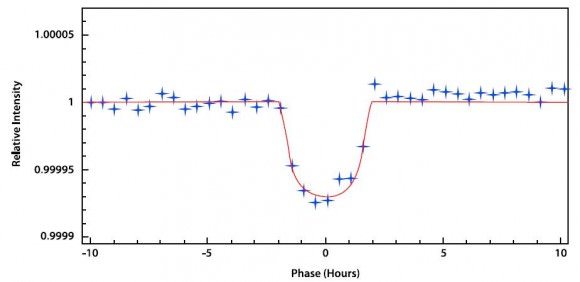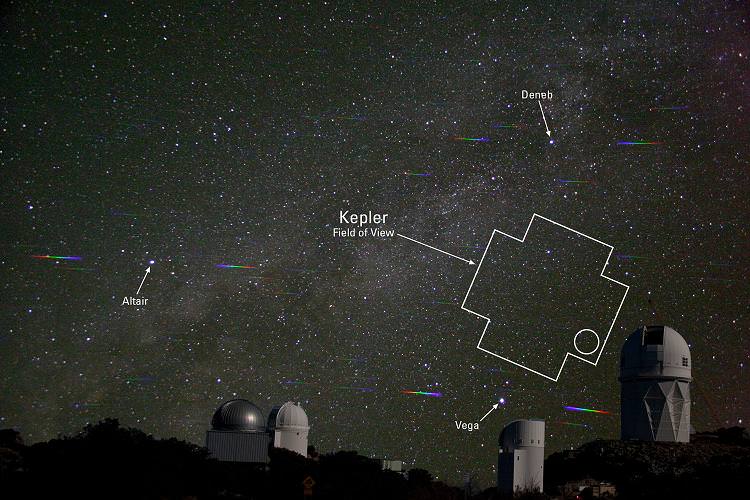[/caption]
Are you ready to add another planet to the growing list of discoveries? Thanks to work done by Steve Howell of the NASA Ames Research Center and his research team, the Kepler Mission has scored another. Cataloged as 21-b, this “new” planet measures about one and half times the Earth’s radius and no more than 10 times the mass… but its “year” is only 2.8 days long!
With such a speedy orbit around its parent star, this little planet quickly drew attention to itself. Kepler 21-b’s sun is much like our own and one of the brightest in the Kepler field. Given its unique set of circumstances, it required a team of over 65 astronomers (that included David Silva, Ken Mighell and Mark Everett of NOAO) and cooperation with several ground-based telescopes including the 4 meter Mayall telescope and the WIYN telescope at Kitt Peak National Observatory to confirm its existence.
At this point, observations place this hot little planet at about 6 million kilometers away from the parent star, where it has estimated temperatures of about 1900 K, or 2960 F. While this isn’t even anywhere near a life-supporting type of planet, Kepler 21-b remains of interest because of its size. The parent star, HD 179070, is just slightly larger than the Sun and about half its age. Regardless, it can still be seen with optical aid and it is only about 352 light years away from Earth.

Why are findings like these exciting? Probably because a large amount of stars show short period brightness oscillations – which means it’s difficult to detect a planetary passage from a normal light curve. In this case, it took 15 long months to build up enough information – including spectroscopic and imaging data from a number of ground based telescopes – to make a confident call on the planet’s presence.
It ain’t easy being a little planet… But they can be found!
Original Story Source: NOAO News Release.

